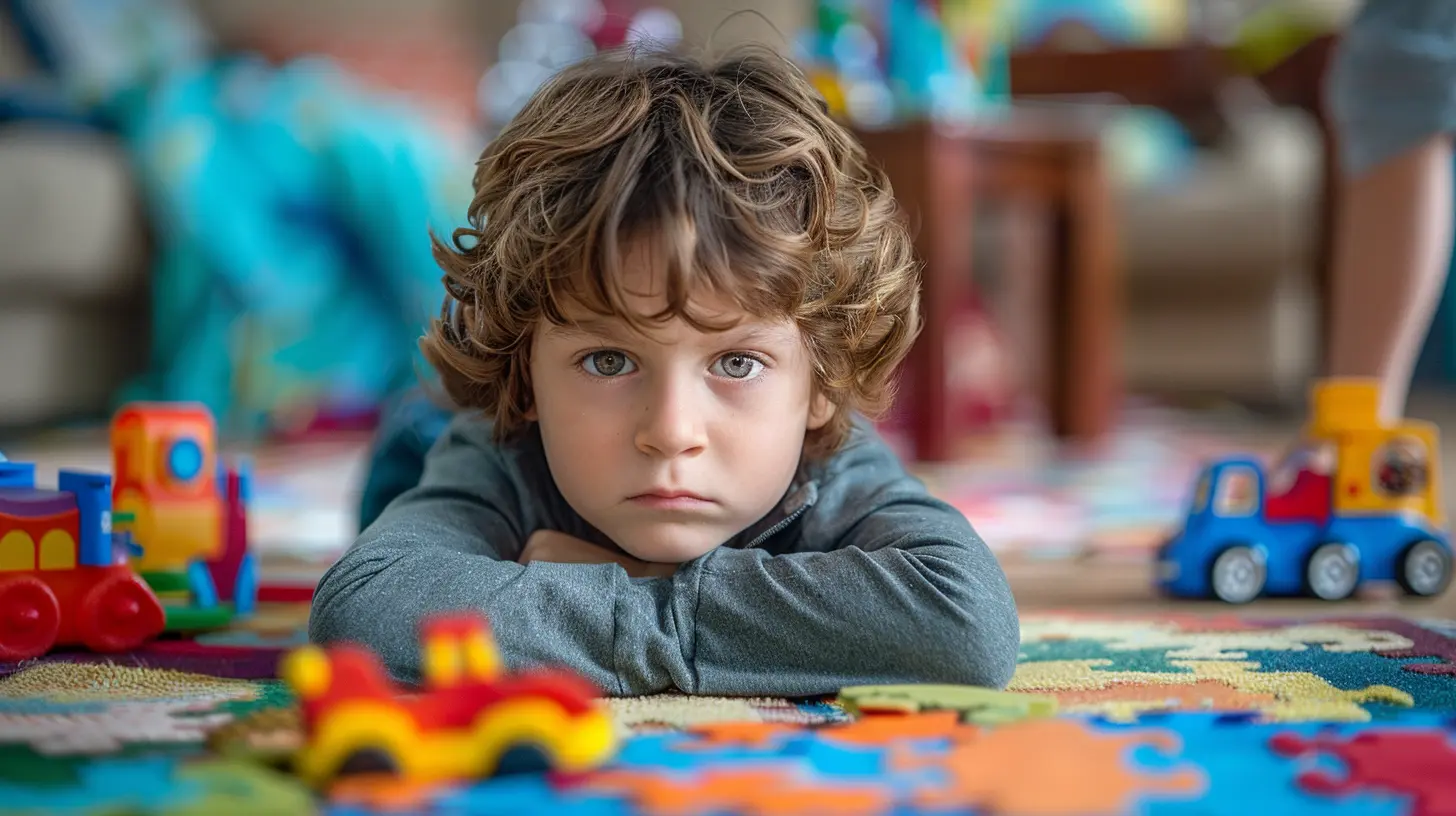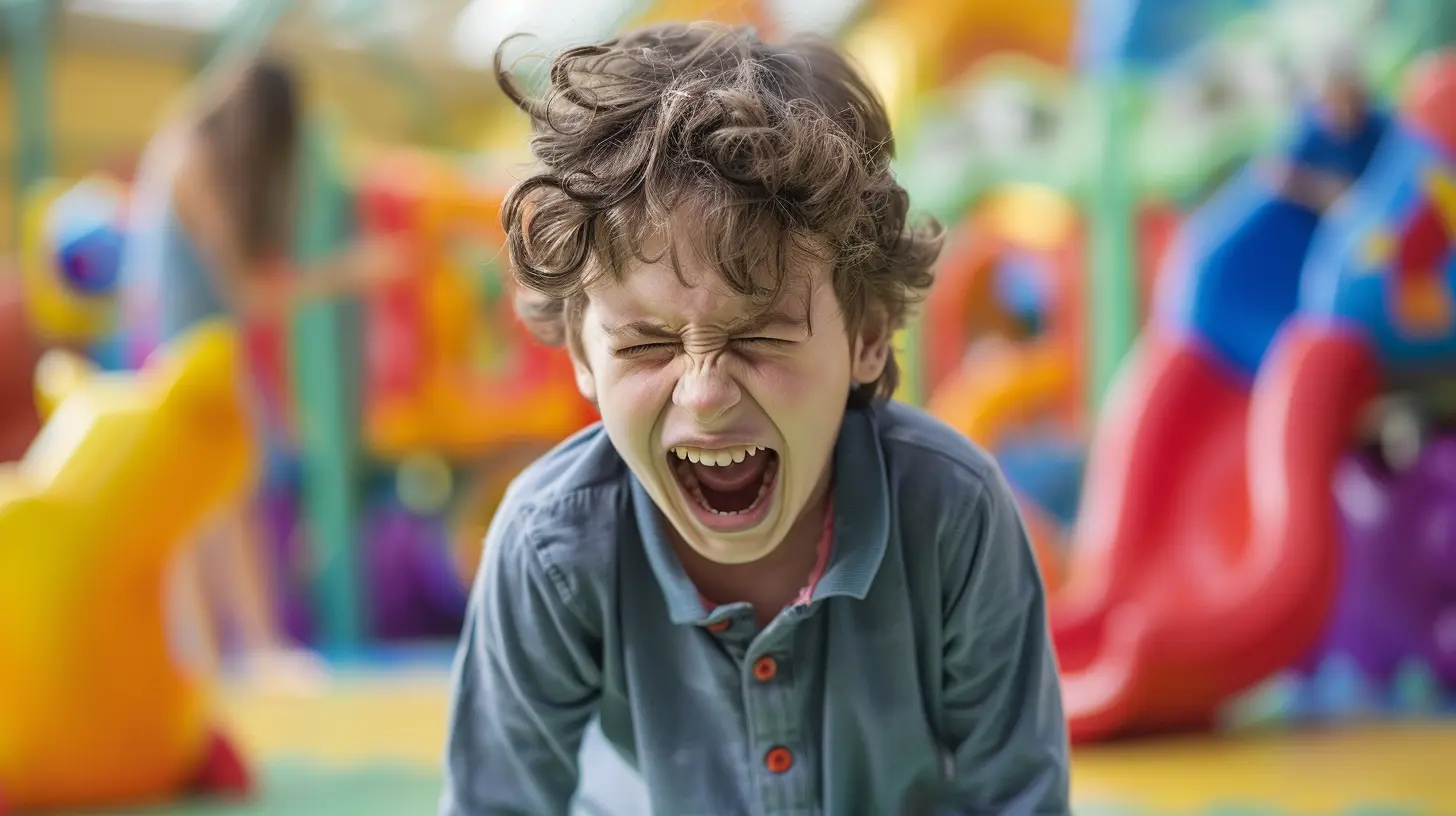The Role of Play in Managing and Preventing Meltdowns
22 October 2025
Let’s be real—parenting can feel like trying to keep a balloon in the air while juggling flaming swords. Between mealtimes, tantrums, screen time battles, and bedtime dramas, it's a wild ride. But there’s one underrated superpower that can make this rollercoaster just a tad smoother: play. Yep, good old-fashioned, giggle-inducing, sometimes messy play.
You might already know play is essential for learning and development, but did you know that it’s also a powerful tool for managing and even preventing meltdowns? Whether you're dealing with toddlers or tweens, play can help kids release pent-up emotions, build resilience, and feel more understood and connected.
So let’s dive into how play works its magic when it comes to emotional regulation and why it should totally be in your parenting toolkit.
What Exactly Is a Meltdown?
First off, let’s clear the air. A meltdown isn’t just a tantrum. It’s bigger, deeper, and honestly a bit scary for everyone involved.Meltdowns often happen when a child’s nervous system gets overwhelmed. Think of it like a bottle of soda shaken over time and then the cap flies off—BOOM! It's not about being bratty or manipulative. It's about having no more capacity to cope.
They can be triggered by sensory overload, fatigue, hunger, frustration, or even too much stimulation (hello, birthday parties). And once a meltdown starts, reasoning with your child is like trying to argue with a volcano—it’s not going to work.
So... What Does Play Have to Do With Any of This?
Glad you asked.Play is actually a powerful regulator for children. It’s how they process the world, connect with others, and express their feelings. When kids play, they’re doing way more than just having fun—they’re learning resilience, practicing problem-solving, and easing emotional tension.
In short? Play is like an emotional pressure valve. Instead of bottling things up until they explode, your child can release little bits of emotion in a safe and joyful way.
The Science Behind Play and Emotional Regulation
Let’s nerd out for a second (I promise it won’t hurt).When kids engage in play, especially imaginative or physical play, their brains release happy chemicals like dopamine and endorphins. This not only boosts their mood but also helps regulate their nervous system.
Plus, play activates the prefrontal cortex—the part of the brain responsible for self-control, decision-making, and emotional regulation. So yeah, play literally helps your child become better at managing their big feelings.
There’s a reason play therapy is a thing. Psychologists use it to help kids work through trauma, anxiety, and behavior challenges. But you don’t have to be a therapist to harness the power of play at home.
Types of Play That Pack a Punch
Not all play is created equal when it comes to meltdown prevention. Let’s break it down:1. Rough-and-Tumble Play
This includes wrestling, chasing, or even pillow fights. It’s physical and chaotic—in a good way.Why it helps:
- It lets kids discharge energy and stress
- It builds trust and connection (especially with parents)
- It teaches self-regulation as they learn when enough is enough
Pro tip: Always establish safe boundaries like “no hitting in the face” or “stop means stop.”
2. Pretend Play
From playing house to dressing up as superheroes, pretend play is your child’s way of making sense of reality.Why it works:
- It allows emotional expression (“My bear is sad today.”)
- It lets them act out and resolve fears or conflicts
- It strengthens empathy and perspective-taking
Don’t be afraid to jump in and create stories together. You might be surprised what your kid reveals in the process.
3. Sensory Play
Think slime, playdough, water play, or kinetic sand. Engaging the senses is incredibly grounding.Benefits include:
- Calming overstimulation (yes, really)
- Promoting focus and attention
- Helping kids self-soothe
Great for those “on the edge” moments when you sense a storm brewing.
4. Free Play
This is unstructured, child-led play with no rules or objectives.Why it’s essential:
- It gives kids autonomy and control
- It nurtures creativity
- It’s a natural stress reliever
Let your kid be bored. Seriously. That’s when the magic often happens.
How Play Prevents Meltdowns Before They Start
We’ve covered how play helps in the moment, but here’s the even cooler part—it can stop meltdowns from happening in the first place.Here’s how:
✅ It Builds Emotional Regulation Skills
Kids learn how to cope with frustration, wait their turn, and express emotions appropriately while playing. The skills they develop through play transfer into real-life situations.✅ It Strengthens the Parent-Child Bond
Play is connection. And when kids feel connected and seen, they’re less likely to spiral. You become their safe base, their “home” in a chaotic world.✅ It Provides a Safe Outlet for Stress
Whether it’s hide-and-seek or a LEGO marathon, play offers a break from pressures (even the good kind). It’s like a mini-vacation for your child’s nervous system.✅ It Offers Predictability and Control
Many meltdowns stem from feeling out of control. Play—especially when it’s child-led—gives kids a chance to make decisions and feel empowered.What to Do During a Meltdown?
Okay, but what if it’s too late and the meltdown is already happening?First, breathe. Then:
- Don’t try to fix—your kid isn’t ready to listen yet
- Stay close and offer calm presence
- Once they’ve calmed down, invest in post-meltdown play
This could be quiet drawing, gentle storytelling, or a soothing sensory activity. Think of it as emotional repair. You’re saying, “I’m still here, even when things get messy.”
Play-Based Strategies You Can Start Today
Want to put this into practice? Here are a few simple ways to ease meltdowns using the power of play:🎨 Create a "Feelings Kit"
Fill a box with toys, squishies, drawing supplies, or calming tools your child can go to when emotions start bubbling.🎭 Use Puppets or Stuffed Animals
Let the toys do the talking. You can say things like, “This bear is feeling frustrated because he didn’t get the toy he wanted. What should he do?”Kids open up more easily when they’re not the center of attention.
🧺 Make a Play Routine
Just 15 minutes of dedicated play time each day can work wonders. Set a timer, let your child lead, and give them your undivided attention.It’s not about what you do—it’s about how you show up.
🏃 Turn Transitions into Games
Getting dressed, brushing teeth, or heading out the door? Turn it into a race, a mission, or a silly obstacle course. Engaging their imagination can make even the toughest moment a little less frustrating.Let’s Talk About Screen Time
Now, before you toss the tablet out the window—hear me out.There’s a time and place for screen-based play, but when it comes to meltdown prevention, active, hands-on play is where it’s at.
Screens can hyper-stimulate kids, especially younger ones, and when the show ends—boom—it’s meltdown city. Try balancing screen time with plenty of sensory and physical play to build emotional resilience.
When to Seek Extra Help
If meltdowns are happening often or feel unmanageable, don’t hesitate to reach out for professional support. Occupational therapists, child psychologists, or play therapists can provide amazing tools tailored to your child’s needs.There’s zero shame in getting help. Seriously, superheroes get sidekicks—and so can you.
Final Thoughts
Play isn’t just something to keep your child busy. It’s a language, a coping mechanism, a way to connect. It is, quite literally, the bridge between your child’s inner world and the chaotic outer one.By weaving play into your daily rhythm, you can create calmer days, stronger connections, and fewer meltdowns (yes, really). It’s not about being perfect; it’s about showing up, being present, and sometimes being a little silly.
So next time you see your kid teetering on the edge of a meltdown, ask yourself—not “How do I stop this?” but “What kind of play might help right now?”
Because sometimes, the most powerful parenting tool isn’t another strategy—it’s just getting down on the floor and joining the fun.
all images in this post were generated using AI tools
Category:
Tantrum TipsAuthor:

Maya Underwood
Discussion
rate this article
1 comments
Lyla McLoughlin
In the dance of childhood, play weaves joy's embrace, Softening storms of emotion, a gentle grace. Through laughter and laughter, peace finds its way.
October 23, 2025 at 3:28 PM

Maya Underwood
Thank you for beautifully capturing the essence of play! It truly is a vital tool for fostering emotional resilience in children.


